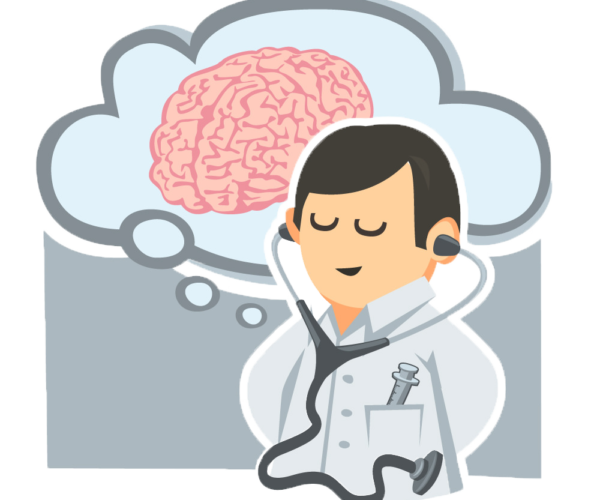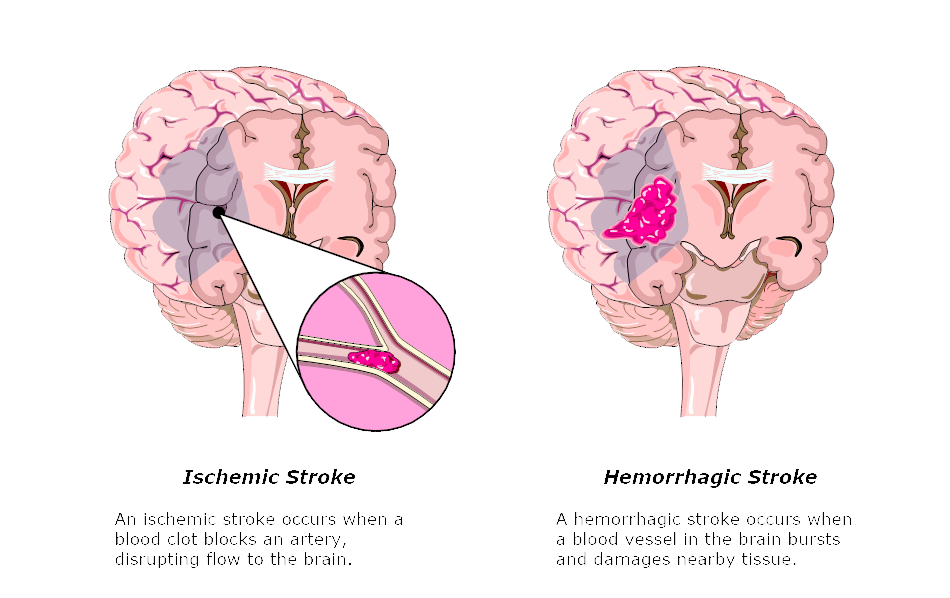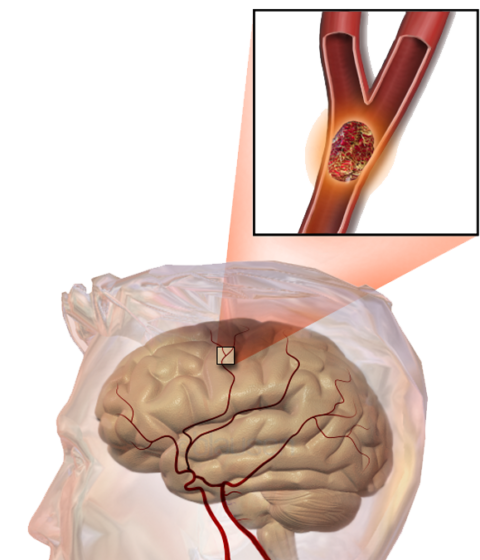The traditional definition of stroke, devised by the World Health Organization in the 1970s, is a “neurological deficit of cerebrovascular cause that persists beyond 24 hours or is interrupted by death within 24 hours”. This definition was supposed to reflect the reversibility of tissue damage and was devised for the purpose, with the time frame of 24 hours being chosen arbitrarily. The 24-hour limit divides stroke from transient ischemic attack, which is a related syndrome of stroke symptoms that resolve completely within 24 hours. With the availability of treatments that, when given early, can reduce stroke severity, many now prefer alternative concepts, such as brain attack and acute ischemic cerebrovascular syndrome (modeled after heart attack and acute coronary syndrome respectively), that reflect the urgency of stroke symptoms and the need to act swiftly.
Stem Cell Therapy for Stroke
WHAT IS IT ?


SIGNS AND SYMPTOMS
Stroke symptoms typically start suddenly, over seconds to minutes, and in most cases do not progress further. The symptoms depend on the area of the brain affected. The more extensive the area of brain affected, the more functions that are likely to be lost. Some forms of stroke can cause additional symptoms. For example, in intracranial hemorrhage, the affected area may compress other structures. Most forms of stroke are not associated with headache, apart from subarachnoid hemorrhage and cerebral venous thrombosis and occasionally intracerebral hemorrhage.
CLASSIFICATION
Strokes can be classified into two major categories: ischemic and hemorrhagic. Ischemic strokes are those that are caused by interruption of the blood supply, while hemorrhagic strokes are the ones which result from rupture of a blood vessel or an abnormal vascular structure. About 87% of strokes are caused by ischemia, and the remainder by hemorrhage. Some hemorrhages develop inside areas of ischemia (“hemorrhagic transformation”). It is unknown how many hemorrhages actually start as ischemic stroke.



EARLY RECOGNITION
Various systems have been proposed to increase recognition of stroke by patients, relatives and emergency first responders. A systematic review, updating a previous systematic review from 1994, looked at a number of trials to evaluate how well different physical examination findings are able to predict the presence or absence of stroke. It was found that sudden-onset face weakness, arm drift (i.e., if a person, when asked to raise both arms, involuntarily lets one arm drift downward) and abnormal speech are the findings most likely to lead to the correct identification of a case of stroke (+ likelihood ratio of 5.5 when at least one of these is present). Similarly, when all three of these are absent, the likelihood of stroke is significantly decreased. While these findings are not perfect for diagnosing stroke, the fact that they can be evaluated relatively rapidly and easily make them very valuable in the acute setting.
For people referred to the emergency room, early recognition of stroke is deemed important as this can expedite diagnostic tests and treatments. A scoring system called ROSIER (recognition of stroke in the emergency room) is recommended for this purpose; it is based on features from the medical history and physical examination.
![]()
TREATMENT
-
DAY 1
At the clinic you will be examined by our physicians. Information including any risks and expectations concerning your treatment, plus answers to any questions you may have will be addressed. A blood draw, to determine chemistries prior to the treatment will be collected and any medication required may be administered. Then you will return to your hotel for a restful day or a good nights sleep.
-
DAY 2
Our physician’s will review the laboratory results, determine if the results are within range, and discuss the response with you. They may or may not provide additional medications and may add adjunctive treatments. They will determine if you would return to the hotel, with little restriction on your activities, or possibly go forward with with your treatment that day.
-
DAY 3
If either a bone marrow or adipose collection will be utilized and the cell count / viability is appropriate for harvest. We typically use local anaesthetics for adults and general anaesthesia for youngsters. The entire procedure normally takes less than 30 minutes. Although some pain is felt when the needle is inserted, most patients do not find the bone marrow collection procedure particularly painful or uncomfortable.
We recently placed a number of videos on our website interviewing our patient’s who discuss the procedure and their lack of discomfort.
After the collection you may return to the hotel, with some restrictions. The bone marrow or adipose collected is processed in our contract State-Of-Art laboratory by trained staff, under the supervision of the lab physician.
As an alternative to the above, umbilical cord derived calls, plasma, protein and extracellular vesicles based on your unique treatment needs may be used based on the patient’s individual medical condition and options. -
DAY 4
You will be treated by IV infusion and/or a lumbar puncture, which injects the stem cells into the cerebrospinal fluid. This route transports the cells into the spinal canal and the brain directly influencing the nervous systems, thereby eliminating the brain/blood barrier. If a lumbar puncture is performed, the patient will be required to restrict their activities and potentially spend the day in the hospital or at their hotel.
-
DAY 5
At the clinic the patient will receive a post-treatment examination and evaluation prior to their release.Optionally there may be the use of additional ancillary therapies to enhance the procedure.
WHAT MAKES OUR TREATMENT DIFFERENT
- At World Stem Cell Clinic and The Royal British Medical Center we practice “Patient Precision Medicine (PPM)” which is a treatment model that proposes the customization of the treatment to each unique patient based on their medical history, stage of disease, exam results, time available for treatment and a patient orientation meeting with our Doctors before determining the best treatment for each unique patient.
- Our staff physicians are all board certified, in their field with years of experience. Your team includes both primary and ancillary care professionals devoted to maximizing your benefits from the procedures. We enroll you in an open registry to track your changes independently, for up to 5 years.
- To maintain our “Patient Precision Medicine (PPM)” services for you we may use peripheral blood, bone marrow, adipose or umbilical cord derived cells, plasma, proteins and Extracellular Vesicles based your unique treatment needs with mutual agreement.
- As our patient we also keep you abreast of the newest developments in treatment research. This is an ongoing relationship to maintain and enhance your health.
- Our promise is to provide you with travel and lodging support, access to bilingual staff members throughout the entire process and most importantly the best medical care possible.






